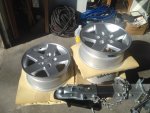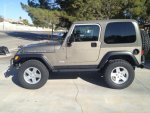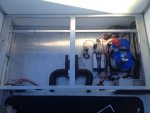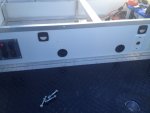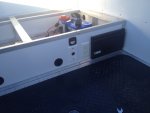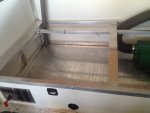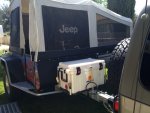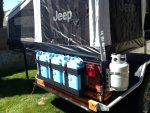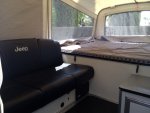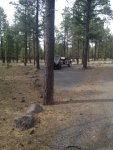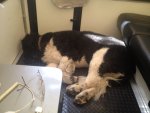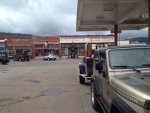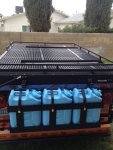
The clouds were arriving by the afternoon. I was thinking maybe a little rain and we will be good. But the next morning showed that we were going to be in for a long weekend.

The rain continued, the ground became soggy and the temperature was heading down as were our spirits!

The Little Red Campfire got a real workout!

Saturday was looking worse!
I will be the first to admit that there is no "perfect" camping system. But I was very happy with the performance of the Jeep Extreme trailer over this weekend which turned out to be a real test of its usefulness.
First, the heater! The Propex heater is a fantastic piece of equipment! At night I set the thermostat at its lowest position. When I heard it turn on I checked the temperature readout and it was in the low 30's. Running it up a bit I spent the night sleeping at about 40 to 45 degrees. The fan is very quiet from the inside and we had almost no condensation in the morning.
Second, a living area out of the weather. In the mornings before getting up a turn of the heater dial had the inside temperature up to 65 in no time. I had a warm dry place to stand up and get dressed before heading out for the day. But best of all it provided a great place to sit and get out of the cold during the day. The tent has three layers of windows in the living area. The first is the screen which is fixed the second is a tinted vinyl window and the third is a canvas cover for privacy. With the canvas zipped back it was possible to sit on the couch and watch the activities outside, while staying warm and dry inside. All around me people with RTTs were sitting in their vehicles running the engines trying to get or stay warm and out of the weather.
Third, a place for my dog out of the weather. This was an important point for me when I first started. It worked great this weekend. Newfoundlands have a heavy coat to protect them from this kind of weather. But anticipating warm temperatures Nemo had a hair cut before the trip so he was as happy to have a warm resting place as I was.
Fourth, water storage. I had plenty of water for the six day five night trip. It was conveniently located and easily accessible.
Fifth, propane storage. The carryout propane bottle was put to good use providing for cooking, lighting, but most of all for the portable fire pit which became our gathering point under the awning during the rain and snow. Propane consumption for the Propex heater was very low given the workout it received over the weekend. I did refill the carryout bottle because of the fire pit use but it was worth every cent.
Sixth, other modifications. The roof rack made transporting an awning, kitchen, chair and the firewood I use the first to nights at Dogtown possible. The gas springs make opening and closing the top a joy and not a worry. The cooler had plenty of room. It kept things cold the first two days and from freezing the next two.
